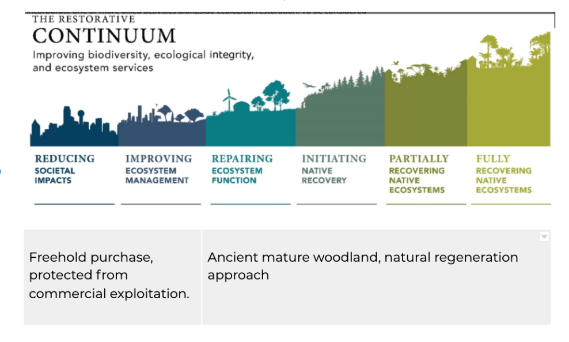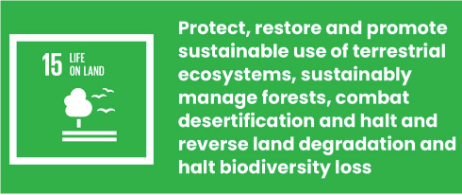Coed Rhyal
Wales, United Kingdom

In our attempt to re-weave nature into the world’s landscapes through restoration of its capacity to provide life-sustaining ecological services, we have identified a variety of potentially restorable bio-diverse habitats.
Our target areas, existing at different stages of degradation, require site-specific treatments that can be broadly categorised into traditional ecological restoration, species targeted conservation and conservation oriented restoration. These are completed in consultation with the local management authorities and institutions while considering appropriately the existing management plans.
Anthropogenic disturbances disrupt previous species interactions and ecological processes as also the assisted regeneration and colonisation attempted during restoration. Without controlling illegal felling, grazing, poaching and other factors injurious to the maintenance of processes that sustain natural habitats, loss of biodiversity is inevitable. Inadequate protection measures lead to habitat alteration and fragmentation that reduce species population sizes below the viability threshold, impact physio–chemical parameters, damage biological connectivity, and ultimately render conservation impossible. It is an undisputed fact that effective protection is a key component of any successful effort made for creating sustainable ecosystems.
While we work to ensure that the protection status of Sacred Grove Clusters is kept high through strict implementation of the prevalent legal instruments; the field-level protection efforts adopt the most appropriate and efficient strategy developed in consultation with the stakeholders. In principle, a participatory approach is the most favoured option to ensure effective protection. The institutions involved are joint (government with community) protection committees or even purely community led protection agencies, though, depending on the site-specific situation, government machinery alone is also kept as an option. The adoption of the latest technologies (geo-spatial imaging) and image analytics shall enable the proactive management of the habitats under protection with locally acceptable protection approaches. We strongly believe that the involvement of the local communities and local expertise in the process of conservation will be critical to our continued success.
Example of our conservation approach customised for Gigrin Prysg:

This approach is in line with the ethos of (United Nations Sustainable Development Goals) UN SDG 15 and also serves the objectives of the United Nations Decade on Ecosystem Restoration (2021-2030).


We secure natural habitats across the world and protect them from further destruction.
Explore your Sacred Groves right now virtually on Google Earth. Every Sacred Groves Cluster is assigned a unique code so you can see exactly what you are protecting.


We love to hear about other people who are striving to make a positive difference to our planet. We hope you enjoy reading them.